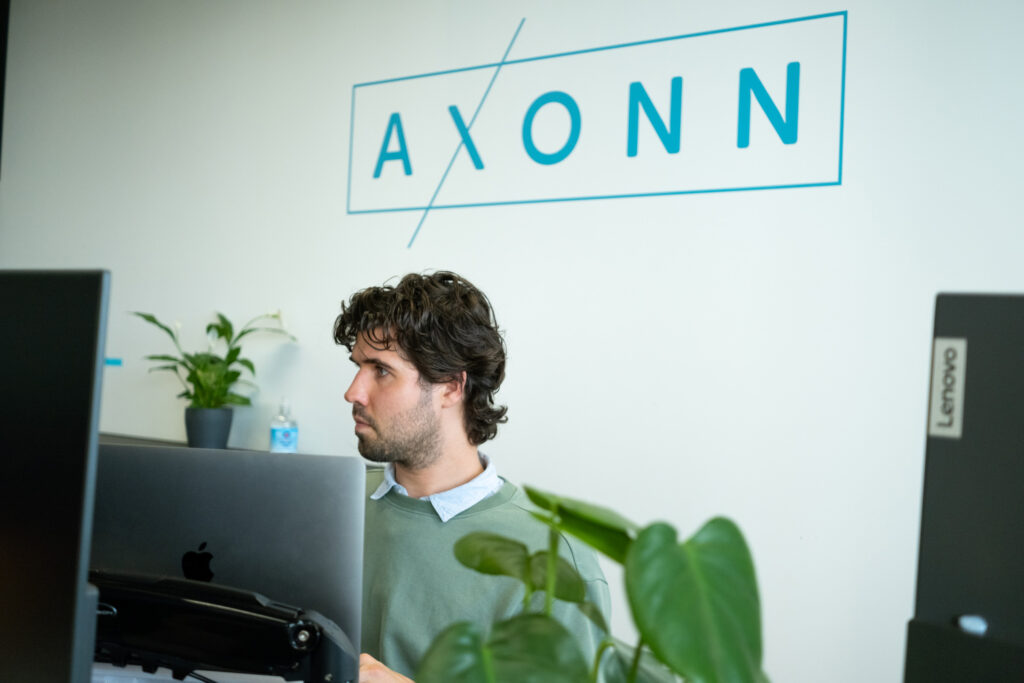
Common underhand marketing tactics to look out for – and how to avoid them
Summary
Dan Cartwright is Axonn’s Head of Strategy. In this piece, he talks about some of the unethical tactics he’s seen marketing agencies use over the years, what problems these can cause for clients, and what businesses should be looking for in a partner.
A lot of firms will turn to agencies for help with their marketing because they don’t have the resources in-house. But when it comes to finding the right partner – whether it’s for content creation, paid advertising or SEO – you’ll find there are a whole host of options available.
Finding the best agency can therefore be a real challenge, and it’s made harder as not all agencies deal fairly with clients. We’ve been in business a long time and have gone through a lot of pitching and onboarding processes with new clients who’ve previously had poor experiences with agencies. And sadly, over the years, I’ve come across many occasions where firms have used underhanded or unethical tactics in order to win and maintain business, even when it’s not in the best interest of their clients.
With this in mind, I’ve put together a few of the most common tactics I’ve seen less-scrupulous agencies use over the years. Broadly speaking, they can be split into three main categories: attempts to get clients to spend more money than they have to, making it unnecessarily difficult to end the relationship, and artificially inflating the results to make themselves look better.
I’ve found that these tactics tend to affect B2B firms in particular, as their own marketing teams are often small and they don’t have full-time specialists on board. This means they often lack in-house knowledge, making them more dependent on agency partners – and therefore more exposed to these pitfalls.
Let’s look at some of these in more detail and go over key red flags you need to avoid, as well as what you should be looking for in a quality marketing partner. For now, I’m going to focus on some of the most common underhand tactics I’ve come across. There are others, which I’ll go over at a later date, but here are my top three tactics to be on the lookout for.
Lack of access

One of the most common problems I find when talking to clients is that they don’t actually have full control over their own digital advertising infrastructure. This lack of access is most commonly found when looking at advertising platforms, but we’ve had some clients who aren’t even the main administrators on their own website, which is crazy!
Most advertising platforms have structures in place to allow companies to give access to their agency partners while retaining control, and this is how it should always be done. However, some agencies try to steer their clients away from these safeguards, either taking full control of their customers’ accounts or even running campaigns solely using their own details.
Keeping control of data

So what are the problems with this? One key benefit when systems are set up correctly is that the client has full access and visibility into everything their agency is doing on their behalf. What’s more, it also means that should the relationship end, the client retains full reporting on what has been done on their platform.
This is immensely valuable intellectual property that is critical to optimising and refining future digital advertising efforts, and so must remain with the client at all times. Yet I’ve come across many situations where we’re onboarding clients who didn’t have access to this because the information was retained by the previous agency.
What can be even worse, however, is when agencies run clients’ advertising through their own accounts, leaving customers with no visibility beyond what is shared in the quarterly report. With no access to this data, clients are looking at lost time, lost money and lost IP.
A portion of advertising spend always goes towards finding out what works and what doesn’t. But if firms don’t have access to their historical data, they’ll have to start from scratch with their next agency and go through the entire process again, spending more money to relearn what should already have been figured out.
Unscrupulous agencies know this, and so by retaining control of advertising data they can make it much harder, more expensive and more time-consuming for their clients to leave.
Billing issues

Another issue caused by a lack of access is billing. The best way to manage ad spending is for the client’s payment details to be directly on the account. This allows businesses to see and authorise exactly how much is being spent.
The alternative to this, where they pay the agency, which in turn takes responsibility for handling the ad platform, leaves clients without full visibility into their own spending. This is called a ‘black box’ solution, and I believe it’s the worst way of working with an agency. While it may be appealing to some clients because of its simplicity – they just give their money to the agency and let them get on with it – they have no transparency and have to take what the agency tells them at face value. This can allow agencies to hide what they’re really spending on ads.
Alternatively, some agencies create ad accounts on behalf of the client, but retain super admin access. This means clients still don’t have sufficient access to be able to manage the account or view results, and also slows the process down as every action has to go through the agency.
The right solution

To avoid these issues, it’s essential to set up accounts in the right way, with the client as the superadmin and a linked account for the agency. While an agency can take responsibility for setting this up, the client must retain overall control, and the agency should provide documentation about who on their team is assigned to the account. This means that, if a client does want to end the relationship, they can easily remove the agency and retain all the valuable historical data.
Locking clients into custom technology
Another problem comes when agencies encourage clients to adopt their own technology, especially for their website’s content management system (CMS). Again, this can leave clients feeling ‘locked in’ to a particular vendor, and can also result in them having a less functional or more expensive website.
I’d always recommend using one of the major CMS options, such as WordPress or Drupal, as there are very good reasons why large portions of the web are based on these technologies. Exactly which one you go for doesn’t really matter, as any decent agency will have the necessary skills to work in it. However, I often see clients who’ve been persuaded by a previous agency to adopt a custom CMS under the promise of getting a solution tailored to them. But this is usually a major mistake.
The benefits of a tried and trusted CMS
Firstly, using a standardised platform makes it easy to change tech agency. If your site is based on WordPress, for example, you can take it to any other agency and be confident they’ll have the skills to take it on straight away with an almost seamless transition. This gives firms the freedom to use other agencies or freelancers as they desire, and this flexibility shouldn’t be underestimated.
Secondly, if you want to expand the functionality of your website, such as adding forms, visual effects or integration with marketing software, there will almost certainly be a pre-existing solution out there for any major CMS. Often this will be a free plugin, or come with just a small monthly fee. This is not the case with a custom CMS, which will often require expensive and time-consuming development work to gain the capabilities you want – assuming it is even possible at all.
Finally, a custom CMS makes it much harder to benchmark the costs of dev work and make sure you’re getting a fair price from your agency. With the likes of WordPress, you can easily gather a range of quotes for any project and compare them to your existing agency. But with a custom solution, you’ll likely have to rely on the builders of the platform and accept whatever quote they provide.
The perils of custom technology
If you want to use a custom CMS in exactly the way it’s sold to you, this can be absolutely fine. But the minute you want to change anything, you’re likely to run into issues. I’ve worked with a number of clients that have gone down the custom CMS route because they want a system that’s been designed for their specific industry, and if firms have very niche and specific needs, this can work well enough for a period. But inevitably, they eventually want to add something outside the scope of this and find themselves unable to do so, and in some cases aren’t able to make even the most minor changes without going back to their developer.
This leaves them facing a large bill to migrate their site to a more flexible alternative to keep up with their changing business needs.
Custom technologies also make it much harder to gain insight into site performance. Major CMS platforms offer a huge range of plugins to help with SEO, for example, letting you easily check for redirects, broken links or the correct semantic markup and metadata. This functionality doesn’t exist with a custom CMS.
In fact, I’ve seen sites where the CMS has thousands of broken pages that are harming its Google results, but we don’t even know what they are because we can’t run basic diagnostic checks, or they don’t even have the ability to add basic tagging like alt text or H2s.
Inflated results
Finally, the third major underhanded agency tactic to be aware of is companies that use creative metrics to inflate the results of their efforts and make themselves look good. There are a huge range of ways in which this can be achieved – including flat out lying – but I’m going to focus on some of the more devious techniques to look out for.
How some firms boost PPC figures
One of the most frequent underhand tactics I see when it comes to PPC is agencies focusing on branded terms for their clients’ AdWords account, meaning they’ll bid on their client’s behalf on the company’s name, brand or products.
Many agencies will do this because users who are already searching for a client’s name represent high-quality traffic. They are very likely to be familiar with the brand and already be in a position to make a purchase. Therefore if they click on a branded ad at the top of the search result, they will stand a good chance of converting – which allows the agency to showcase the great results from their PPC efforts.
Of course, the key here is that as long as your organic SEO efforts are up to scratch, you should already be ranking at the top of Google SERPs for your own brand name and products, unless you’re in a highly competitive sector. This means that, had the agency not been bidding on these keywords, the user would likely have clicked on the top organic result anyway and ended up in exactly the same place without the expense of the paid advertising.
Strong leads via branded PPC can look good in an agency’s reporting. But as well as giving you an inaccurate picture of what they are doing, it also drags down all of your other reporting by artificially inflating the numbers. An agency that is bidding on your name or brand without you specifically asking them to is therefore often a red flag for a relationship.
What to look for in an agency

As I said above, it’s often B2B firms that fall foul of these issues, usually because they don’t have a high level of expertise in-house. Therefore, if you want to avoid these problems, one of the best tips is to make sure you work with an agency that tries to educate you about the reasons behind the strategies it recommends, rather than simply encouraging you to leave everything in their hands.
An agency with a wide range of skills is also beneficial. A more specialist company will naturally look to guide clients down the path they’re most familiar with, whether this is a certain paid advertising platform or a custom CMS. However, this won’t take into account whether or not this is right for the client’s unique needs. A more holistic, vendor-agnostic agency, on the other hand, will be able to make recommendations based on what they think is best for the client, not just the agency.
Good partners are those that look to bring clients along with them on the marketing journey and explain clearly the ‘why’ behind their actions, not just the ‘what’ and make sure the client is fully involved at every stage. It will require more hands-on engagement with the client, but the results will speak for themselves.
We’d love to hear from you,Get In Touch.
